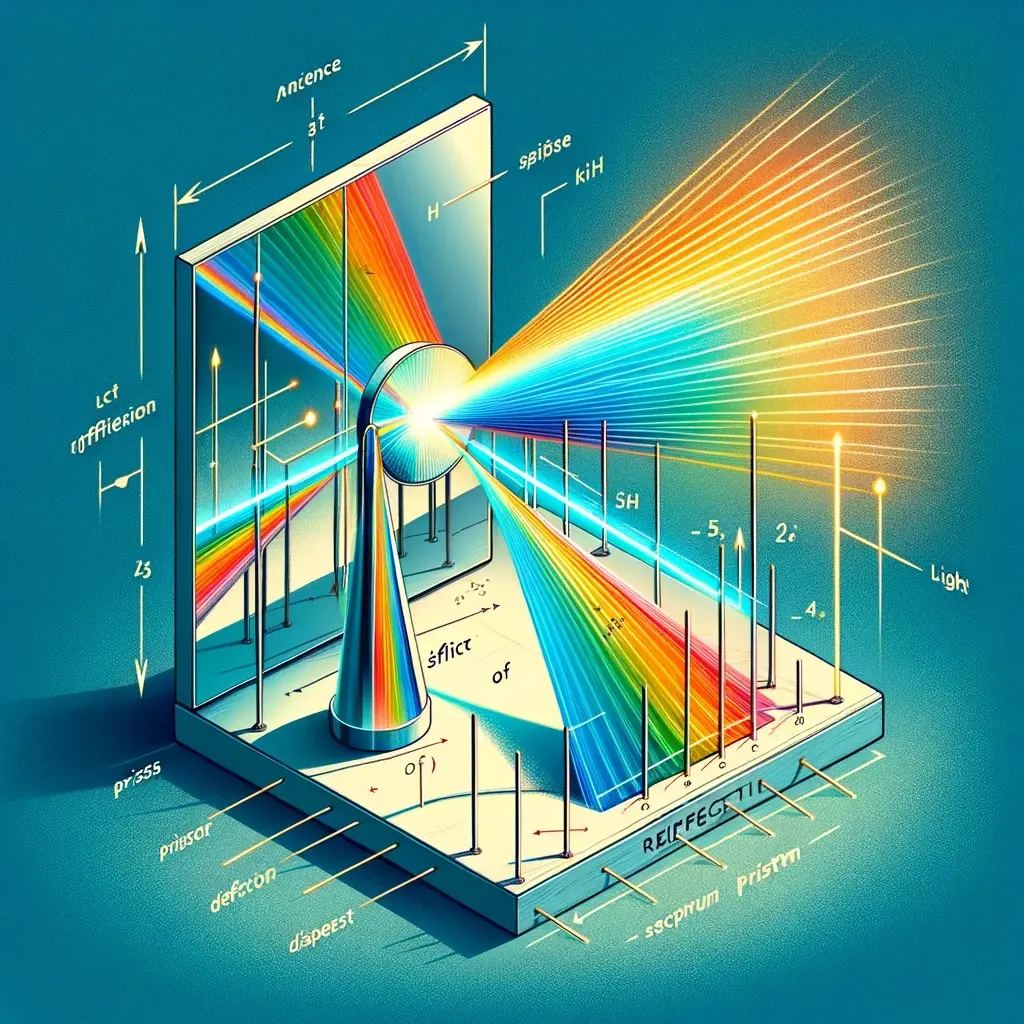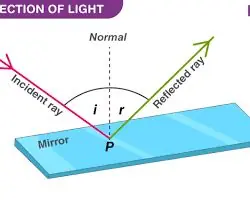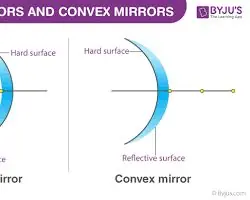
Reflection and Refraction of Light Explained: Essential Guide for Class 10 Physics

Reflection and Refraction of Light: A Comprehensive Guide for Class 10 Students
Introduction to Light and its Phenomena
Light, a form of energy visible to the human eye, is a fundamental concept in physics, influencing various natural phenomena. This article delves into two key properties of light: reflection and refraction, explaining their principles, applications, and their significance in our daily lives.
Chapter 1: Understanding Reflection of Light
1.1 Basics of Reflection
Reflection occurs when light bounces off an object. The law of reflection states that the angle of incidence (the angle at which light hits a surface) is equal to the angle of reflection (the angle at which light bounces off). This is observed in two types: regular and diffuse reflection.
1.2 Regular vs. Diffuse Reflection
In regular reflection, light reflects from a smooth surface at a definite angle, producing a clear image. Diffuse reflection, on the other hand, occurs when light reflects off a rough surface, scattering light in different directions, leading to a blurred or no image.
Chapter 2: Exploring Refraction of Light
2.1 What is Refraction?
Refraction is the bending of light as it passes from one medium to another with a different density. This bending occurs due to the change in the speed of light in different media.
2.2 Snell’s Law
Snell’s Law helps calculate the extent of bending. It states that the ratio of the sine of the angle of incidence to the sine of the angle of refraction is constant, depending on the two media involved.
Chapter 3: Applications of Reflection and Refraction
3.1 In Daily Life
Reflection and refraction are integral to our daily experiences. Mirrors exploit reflection to form images, while lenses use refraction to correct vision or capture images in cameras.
3.2 In Technology
Advanced applications include fiber optics, where refraction guides light through cables for telecommunications, and telescopes, which use mirrors and lenses to observe distant objects in space.
Chapter 4: Experiments and Observations
4.1 Simple Experiments
Engaging in hands-on experiments, like observing the reflection in mirrors or bending of light in water, enhances understanding of these concepts.
4.2 Real-World Observations
Observing everyday phenomena, like the apparent bending of a straw in water or the mirage effect on hot days, provides practical examples of refraction and reflection.
Conclusion
Understanding reflection and refraction opens a window to the fascinating world of optics and light. These principles not only form the basis of many optical devices but also offer insights into the nature of light itself.
Light and Its Interactions: Reflection, Spherical Mirrors, and Refraction
Light is a fascinating phenomenon that governs how we see and interact with the world around us. Its behavior can be described by two fundamental principles: reflection and refraction. Let’s explore these concepts in detail, along with the intriguing world of spherical mirrors:
Reflection:
When light encounters a smooth surface, it bounces back in a predictable manner. This phenomenon is called reflection. The key principle governing reflection is the law of reflection:
- The angle of incidence (the angle between the incoming light ray and the normal to the surface) is equal to the angle of reflection (the angle between the reflected light ray and the normal).

Spherical Mirrors:
Spherical mirrors are curved mirrors that resemble a part cut out from a sphere. They come in two main types:
- Concave mirrors: These inward-curving mirrors converge incoming light rays, like a magnifying glass. They can be used to focus light or create magnified images.

- Convex mirrors: These outward-curving mirrors diverge incoming light rays, making objects appear smaller. They are often used in rearview mirrors to provide a wider field of view.
Refraction:
When light passes from one medium to another (e.g., air to water), its speed changes. This change in speed causes the light to bend, a phenomenon called refraction. The degree of bending depends on the refractive indices of the two mediums.
The refractive index is a measure of how much light bends when passing through a material. Materials with higher refractive indices bend light more than those with lower indices.
Applications:
These principles of reflection and refraction have numerous applications in our daily lives, from simple mirrors and lenses to complex optical instruments like telescopes, microscopes, and cameras.
- Mirrors: Reflect light, enabling us to see our reflections and manipulate light paths.
- Lenses: Focus or diverge light, used in eyeglasses, cameras, and telescopes.
- Prisms: Separate light into its component colors, used in rainbows and spectrographs.
Understanding these fundamental concepts helps us appreciate the beauty and complexity of light and its interactions with the world around us.
Questions and Answers on Reflection and Refraction of Light
- Q: What is the law of reflection?
A: The law of reflection states that the angle of incidence (the angle at which light hits a surface) is equal to the angle of reflection (the angle at which light bounces off), with both angles measured from the normal to the surface. - Q: Define regular and diffuse reflection.
A: Regular reflection occurs when light rays reflect off a smooth surface and remain parallel, creating a clear image. Diffuse reflection happens when light rays reflect off a rough surface, scattering in many directions, resulting in a blurred or no image. - Q: What causes refraction of light?
A: Refraction of light occurs when light travels from one medium to another of different density, causing the light to change speed and bend at the boundary between the two media. - Q: State Snell’s Law.
A: Snell’s Law states that the ratio of the sine of the angle of incidence to the sine of the angle of refraction is a constant, known as the refractive index, and is specific to the pair of media involved. - Q: How does a prism disperse white light?
A: A prism disperses white light into its constituent colors (spectrum) due to refraction. Different colors of light bend by different amounts as they pass through the prism, separating them to form a spectrum. - Q: Why do we see a rainbow in the sky?
A: Rainbows are formed due to the refraction, dispersion, and internal reflection of sunlight inside water droplets in the atmosphere, which separates light into various colors forming a circular arc. - Q: What are the applications of reflection?
A: Reflection is used in various applications like mirrors for personal grooming or reflecting telescopes, solar cookers, periscopes, and in technology for sensors and signal reflectors. - Q: How is refraction used in lenses?
A: Refraction is utilized in lenses to bend light rays to focus them at a point. This principle is applied in eyeglasses, cameras, microscopes, and telescopes for image formation and vision correction. - Q: What is total internal reflection, and where is it used?
A: Total internal reflection occurs when light rays traveling from a denser to a rarer medium hit the boundary at an angle greater than the critical angle, reflecting back entirely into the denser medium. It is used in fiber optics and optical instruments. - Q: Explain why a straw appears bent in water.
A: A straw appears bent in water due to refraction. Light rays from the straw bend as they move from water to air, making the straw appear at a different position than where it actually is, thus appearing bent.